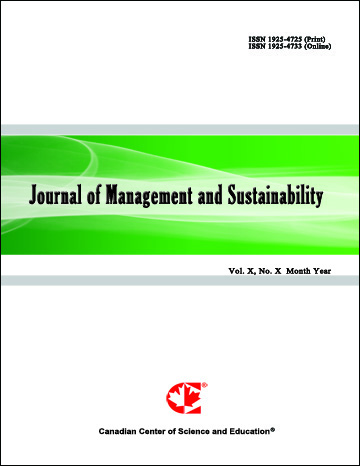The Effect of Ecological Elasticity in Taiwan’s Carbon Reduction Policies: The STIRPAT Model
- Po-Young Chu
- Yu-Ling Lin
- Cyuan-Sian Guo
Abstract
The challenges from the climate change and the global warming have become one of the most important issues to solve in the world. Under the Kyoto Protocol, countries which have signed the Kyoto Protocol have faced the pressure of reducing greenhouse gas emissions. The two main policies for reducing carbon dioxide are “carbon tax” and “carbon trading”. This research explores which policy will be more suitable for the society and economic environment of Taiwan. This research uses EIA database, the statistical data from the Taiwan Bureau of Energy, Ministry of Economic Affairs, and the data from AREMOS database from 1982 to 2010. The dependent variable is the emission of carbon dioxide, and the independent variables are premium diesel oil price index, population, GDP per capita and the squared term of GDP per capita. The research method is based on the Ordinary Least Squares to estimate the ecological elasticity in the STIRPAT model by analyzing the influence of the change of energy price to the change of the emission of carbon dioxide. From the empirical result, it was discovered that though the energy price and the emission of carbon dioxide was negatively correlated, the ecological elasticity was inelastic. As a result, carbon trading seems a more suitable policy for Taiwan.
- Full Text:
 PDF
PDF
- DOI:10.5539/jms.v6n1p121
Journal Metrics
Google-based Impact Factor (2021): 1.54
h-index (July 2022): 37
i10-index (July 2022): 147
h5-index (2017-2021): 12
h5-median (2017-2021): 19
Index
- Academic Journals Database
- ANVUR (Italian National Agency for the Evaluation of Universities and Research Institutes)
- CAB Abstracts
- CNKI Scholar
- EconBiz
- Excellence in Research for Australia (ERA)
- GETIT@YALE (Yale University Library)
- Harvard Library
- HeinOnline
- Infotrieve
- JournalTOCs
- LOCKSS
- MIAR
- PKP Open Archives Harvester
- RePEc
- Scilit
- SHERPA/RoMEO
- Stanford Libraries
- UCR Library
Contact
- Evelyn XiaoEditorial Assistant
- jms@ccsenet.org
